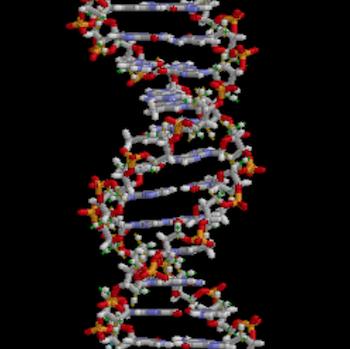Though only one of them still exists, the Seven Wonders of the Ancient World -- such as the Colossus of Rhodes and the Hanging Gardens of Babylon -- transcend space and time.
What makes these structures so awe-inspiring is the fact that they were built without cranes or any piece of equipment we associate as being essential to modern construction. We could say that, though these ancient cultures were of relatively limited means, they displayed great architectural ingenuity and engineering ability. Archaeologists still don't know how the Great Pyramid was built.
Today, biomedical scientists stand in a position not dissimilar to that of our ancient ancestors. A thousand years from now, we will be viewed as naïve and of limited means. Yet, it is quite possible that historians of science will look back at the 20th and 21st Centuries as the years in which great marvels were accomplished. If there is ever a list called The Seven Wonders of the Biotech World, this is what should be on it:
Sequencing of the Human Genome. When a "rough draft" of the human genome was published in 2000, many assumed that groundbreaking therapies were right around the corner. Well, things didn't work out like that. As it turned out, the genome was much more complicated than we thought, thanks to phenomena such as epigenetics and other mechanisms of regulation of gene expression. However, the human genome sequence is still the ultimate "Rosetta Stone" of biotechnology. Personalized medicine, DNA testing (for ancestry, forensics, and disease), and other technologies forever will rely upon it.
The Cloning of Dolly the Sheep. Wouldn't it be great if you had a twin? Scientists first made a "twin" sheep called Dolly by removing the nucleus of an udder cell and placing it inside an egg with its nucleus removed. This new cell was then implanted into a mother, and eventually, Dolly was born. This same technique, called somatic cell nuclear transfer (SCNT), has been used to clone cats, dogs, mice, and monkeys. We could probably do it in humans, but it would be incredibly unethical.
Mass Production of Insulin in Bacteria. Before biotechnology, diabetes patients received insulin extracted from pigs and cows. According to the National Museum of American History, "more than two tons of pig parts were needed to extract just eight ounces of purified insulin." But then scientists found a better way. They inserted the human gene for insulin into bacteria, and the genetically modified bacteria were then grown in gigantic fermenters where they produced insulin. To this day, that is how insulin is produced worldwide.
Genetic Manipulation of Plants. Around the time that Paul Ehrlich was telling us that we were all going to die of mass starvation, Nobel Prize-winning plant geneticist (and ACSH co-founder) Norman Borlaug was breeding better crops. He eventually created a high-yield, disease-resistant variety of wheat that is credited with saving millions (perhaps up to a billion) lives. Since then, with the aid of modern biotechnology, scientists have further increased yields by creating plants that are resistant to insects, herbicides, and drought.
Mind Reading and Thought Control. "Wait a second," you may be thinking. "Isn't mind reading and thought control just a sci-fi fantasy?" Not anymore. Technology already exists that can reconstruct an image based solely on brain signals generated by a person looking at something. We can use brain scanners to communicate with patients in a persistent vegetative state. And, for the rock-bottom price of $159.99, you can control a cockroach with your iPhone. (Cockroaches sold separately.)
Gene Therapy. Patients born with certain genetic diseases can now have them cured -- not just managed or treated, but actually cured. A rare immunogenetic disease made famous by the "Bubble Boy" that causes children to be severely immunocompromised can now be cured with gene therapy. Zolgensma, the most expensive drug in the history of the world (with a price tag of $2.125 million), cures spinal muscular atrophy. Scientists are currently working on a cure for sickle-cell anemia.
Regeneration of Human Organs. Using a patient's own stem cells, we can regenerate simple organs such as skin, tracheas (windpipes), and bladders. Notably, this technology precludes organ rejection. It is not yet possible to regenerate more complex organs, like the heart or liver.
That's the list. And now a prediction:
The Eighth Wonder of the Biotech World: Resurrection of Species. No, dinosaurs aren't coming back. But other species almost certainly will. Within our lifetime, it is extremely likely that we will resurrect extinct species, such as the woolly mammoth. Achieving this will require the same sort of technology that allowed the cloning of Dolly, as well as the ability to piece together fragmented DNA sequences (because DNA decays over time) into artificial chromosomes. Zoos of the future could be quite interesting.




